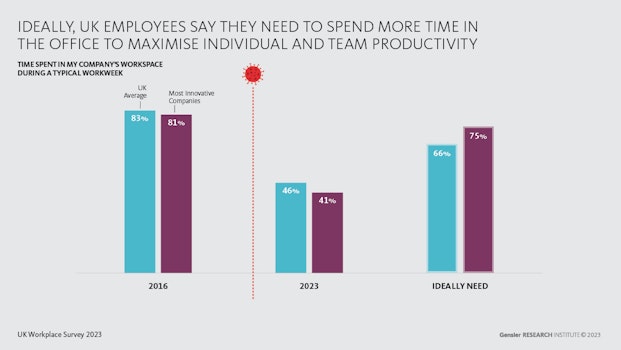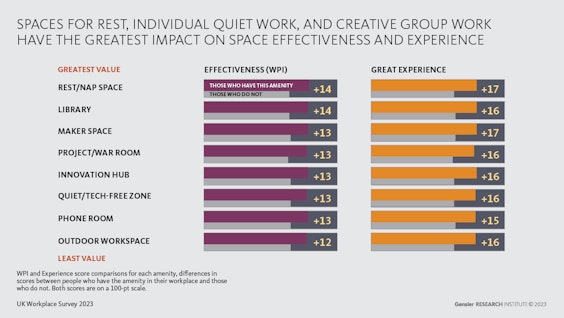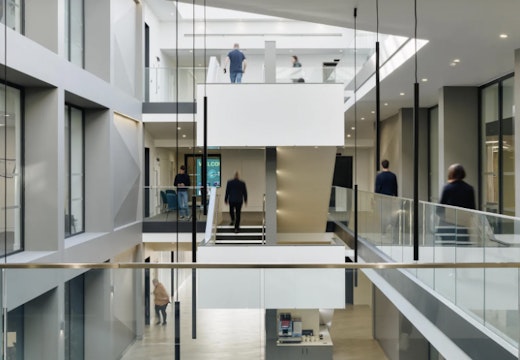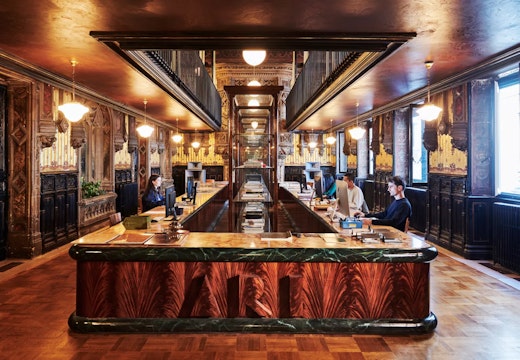What are the most impactful spaces for workplace experience?
New research by architectural firm Gensler in the UK explores what spaces really matter for workplace performance and experience - and where the office fits into a new ecosystem of work
As office workers around the UK embrace new patterns of hybrid working, they are spending less time in the office than before the pandemic. With this flexibility comes a new set of challenges for workplace design.
Global architecture firm Gensler has released its latest UK Workplace Survey data which reveals that employees still need the office as a vehicle for productivity, but it requires critical changes to make it a destination of choice.
A place for productivity
Since Gensler’s last UK workplace survey in 2016, its research has highlighted some core differences not only in the way we work, but how our priorities have shifted in why we come to the office. This survey of more than 2,000 UK-based office workers found that employees are more mobile than ever – spending a typical working week between their home, office, and ‘other’ locations such as client sites, coworking spaces, travelling, or even coffee shops. This has almost halved the amount of time employees were spending in the office in 2016.
‘There is a gap emerging between what employees are doing and what they say they need…’
Although employees are spending just 46 per cent of their typical work week in the office, they say that they ideally need to come into the office 66 per cent of the time to maximise their productivity. This increases to 75 per cent for the workers in the most innovative companies. There is a chasm between what employees are doing and what they say they need. If employees say they need the office to be most productive, and they have more agency than ever to choose where they work, why aren’t they choosing the office more often? What’s holding them back?

Image: Courtesy of Gensler
What spaces matter most?
The two most important reasons employees are coming to the office is to focus on their work and to sit with their team, according to Gensler’s research. This signals that employees value the office as a place to get their work done and to be around their teams. The desire to work productivity and engage in social and collaborative activities requires a diverse provision of workspaces.

Image: Courtesy of Gensler
Gensler’s data looks at the difference in performance and experience between workplaces that have certain amenities against those that do not. It starts to paint a picture of the most impactful spaces.
In the UK, spaces for restoration and reflection, individual work, and creative group work rise to the top of the list. The workspaces with the most impact are areas to rest or nap – an anomaly compared with Gensler’s workplace research in the U.S., Mexico and Canada.
Workplaces that have offer a diverse choice of spaces to work inside and around the office consistently have better performance and experience scores. More than four in five office workers who say they have a great experience at work have choice in where they work within their office. This highlights the importance of choice when designing workplaces.
The experiential overlay
While measuring the effectiveness of a workplace is an important metric to understand what is and isn’t working in an office, it only tells half the story. Experience is increasingly a deciding factor in where employees choose to work. A workplace now needs to be both highly effective and offer a great experience to compete with other locations.
Gensler asked respondents to report their ideal mix of experiences out of eight possible choices: coffee shop, boutique hotel, residential, corporate, conference centre, creative lab, library, and clubhouse. While there was no universal preference towards one type of experience, there was an overwhelming individual willingness to come to the office for the right mix of experiences.
‘Organisations are now at a unique point in time in their relationship with workplace…’
Three in four hybrid workers reported they would be willing to come into the office more often for their ideal experiences, and 45 per cent said they would be willing to come in one additional day per week. If the right mix of experiences is offered, the younger generation of workers are the most willing to come into the office more often.
Organisations are now at a unique point in time in their relationship with workplace. Gensler’s UK research suggests the time is ripe to experiment with office design within a broader ecosystem of work. As companies consider their next step, it’s clear that critical changes need to be made to the workplace to create spaces that are effective and offer employees a great experience.








